What is Neptune?
Neptune is the eighth and farthest known planet from the Sun in the Solar System. It is a gas giant, similar in composition to Uranus, and is often referred to as an "ice giant" due to its composition of water, ammonia, and methane ices. Neptune's atmosphere is primarily composed of hydrogen and helium, with small amounts of methane contributing to its blue coloration.Physical Characteristics of Neptune
- Equatorial Diameter: 49,528 km
- Mass: 1.024 × 10^26 kg
- Surface Temperature: -214°C
- Orbital Period: 164.79 Earth years
- Rotation Period: 16.11 hours
- Number of Moons: 14 confirmed moons
Key Features of Neptune
Neptune is known for its:- Great Dark Spot: A dark, oval-shaped storm in Neptune's southern hemisphere, similar to Jupiter's Great Red Spot.
- Rings: Neptune has faint, narrow rings that are difficult to observe from Earth.
- Atmospheric Composition: The presence of methane in the atmosphere gives Neptune its distinctive blue color.
Interesting Facts about Neptune
- Neptune was the first planet to be discovered through mathematical predictions rather than empirical observation.
- It has the strongest winds in the Solar System, with gusts reaching up to 2,100 km/h.
- Neptune's largest moon, Triton, orbits the planet in a retrograde direction, suggesting that it may have been captured from the Kuiper Belt.
Study Guide
To study Neptune effectively, consider focusing on the following areas:- Neptune's physical characteristics, including its size, mass, and temperature.
- The composition of Neptune's atmosphere and the role of methane in its coloration.
- Neptune's moons and their unique features, such as Triton and its retrograde orbit.
- Comparisons between Neptune and other gas giants in the Solar System, particularly Uranus.
- The process of Neptune's discovery and its significance in the field of astronomy.
[Neptune] Related Worksheets and Study Guides:
.◂Science Worksheets and Study Guides First Grade. My senses
Study Guide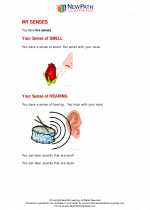 My senses
My senses  Activity Lesson
Activity Lesson My Senses
My Senses  Worksheet/Answer key
Worksheet/Answer key My senses
My senses  Worksheet/Answer key
Worksheet/Answer key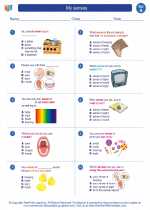 My senses
My senses  Worksheet/Answer key
Worksheet/Answer key My senses
My senses  Worksheet/Answer key
Worksheet/Answer key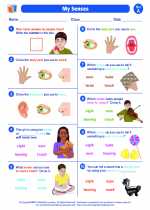 My senses
My senses  Worksheet/Answer key
Worksheet/Answer key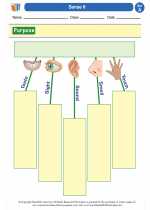 Sense It
Sense It  Worksheet/Answer key
Worksheet/Answer key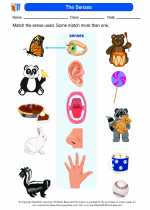 The Senses
The Senses  Vocabulary/Answer key
Vocabulary/Answer key My senses
My senses 

 Activity Lesson
Activity Lesson
 Worksheet/Answer key
Worksheet/Answer key
 Worksheet/Answer key
Worksheet/Answer key
 Worksheet/Answer key
Worksheet/Answer key
 Worksheet/Answer key
Worksheet/Answer key
 Worksheet/Answer key
Worksheet/Answer key
 Worksheet/Answer key
Worksheet/Answer key
 Vocabulary/Answer key
Vocabulary/Answer key

The resources above cover the following skills:
PHYSICAL SCIENCE (NGSS)
Waves and their Applications in Technologies for Information Transfer
Students who demonstrate understanding can:
Make observations to construct an evidence-based account that objects can be seen only when illuminated.